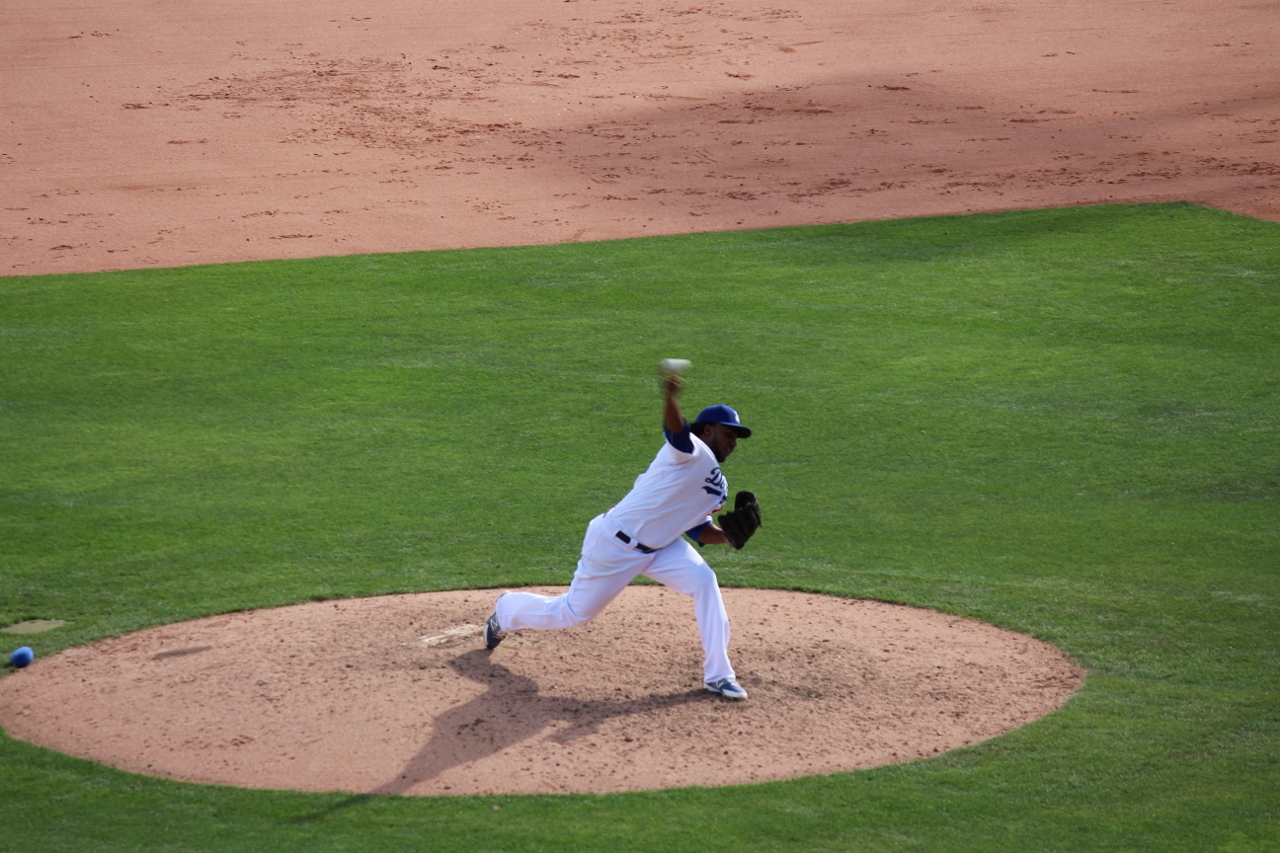
| IP | K% | BB% | HR/9 | ERA | FIP | xFIP | WAR | |
| MLB | 74 | 28.1 | 7.5 | 1.3 | 3.04 | 3.81 | 3.43 | 0.8 |
What happened in 2016: Pedro Baez‘s inconsistency and tortuously slow pace did not allow him to progress in his career as a reliable relief pitcher or successful setup man despite strong peripheral numbers.
If Baez had an official song played when called from the bullpen, it would be the annoying dial-up Internet sound. The lengthy time between his pitches spurred many Twitter jokes and David Schoenfield of ESPN to write about Baez’s slow as molasses meanderings on the mound in his timely post entitled ‘Nobody wants to see Pedro Baez pitch the rest of this postseason.‘
“During the regular season, the average time between pitches was 22.7 seconds. Baez was the slowest worker of all, averaging 30.2 seconds between pitches. In the postseason, he’s slowed down even more. Melting glaciers in Greenland move more swiftly. The Dodgers have tried in the past to get him to speed up his delivery, to no avail. “Pedro’s very methodical,” Dodgers manager Dave Roberts said after Game 5 on Thursday, in the understatement of the year. Baez allowed five runs, in part because of two defensive miscues in which Dodgers fielders appeared to react a split-second too slowly. Maybe Baez’s pace was part of the reason.”
What was even more frustrating about Baez’s season than the time he took between his pitches was his inability to find consistency on the mound despite having some strong peripheral numbers. He collected the second-most strikeouts out of the Dodger bullpen behind Jansen (83), and his 1.00 WHIP was up there with the best relief pitchers in the majors with at least 50 innings pitched. Yet his struggles continued with his command and unreliability in high-leverage situations, an enduring problem Dustin wrote about back in April.
“Until Baez learns to command his pitches in the strike zone, he won’t reach his late-inning reliever ceiling. He’s still young in terms of pitching experience, but it’s time for him to take a step forward. If he doesn’t, the Dodger bullpen could continue to be a question mark, even when it has good, productive stretches.”
Despite Baez having one of those aforementioned productive stretches, a 15-game scoreless streak in July, he never did take that step forward to become a viable option as an eighth-inning setup guy to Jansen. Luckily the Dodgers took advantage of a remarkable season from Joe Blanton, who stepped up to take on that role.
Baez was particularly vulnerable to the home run in 2016, and he allowed nearly three-times as many long balls (11) than he did in 2015 (4). Not only did he allow 2.7 home runs per nine innings, but he also failed to pitch reliably with runners in scoring position (opponents hit .264/.317/.509/.826 with seven extra-base hits including three home runs against him with RISP).
His poor pitch selection and his lack of rhythm on the mound continued into the postseason when he allowed six runs (two earned) on six hits with four strikeouts and two walks in 3 1/3 innings pitched in the NLCS against the Cubs.
A converted third baseman, Baez is still only 28 years old. Although he has only 149 major-league innings on his arm, the lack of progression in his pitching development makes it more and more unlikely that he can be a reliable late-inning option for Dave Roberts.
2017 status: Following the re-signing of Kenley Jansen this off-season, Baez will resume a middle-relief role or potential setup role in the Dodgers’ bullpen.
 Dodgers Digest Los Angeles Dodgers Baseball Blog
Dodgers Digest Los Angeles Dodgers Baseball Blog